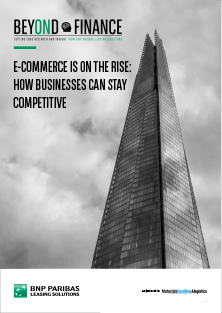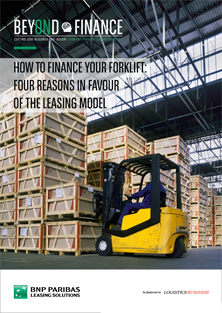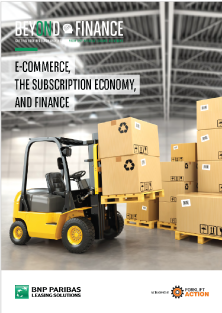Push and pull factors influencing investment decisions
It’s probably fair to say that market challenges arising from the pandemic and Brexit have affected suppliers, manufacturers, and dealers and continue to test the resilience of the supply chain. Rising energy costs, stock shortages, inflation rises, and technological change are all exerting pressure. All this, with the announced increase in corporation tax from April 2023, mean it’s more important than ever for business owners to adapt to rapid changes in the market in order to thrive.
It’s a complex picture, with a large increase in consumer spending post-pandemic considered to be one of the main drivers of the 2021/2022 economic rebound. Low business investment throughout lockdown also caused a pent-up demand, contributing to shortages and increased costs post-pandemic¹.
The recent boom in e-commerce is a key consumer trend which is leading logistics professionals to reassess their warehousing, equipment, and software needs. Some are expanding or re-configuring their premises and/or investing in new warehouse management systems (WMS) to streamline their operations and ensure the fastest possible route to stock. Automation and AI can also help to lower labour costs and alleviate the current labour shortage. Autonomous label scanning for example can save operators up to 40 hours per week, freeing resources for other areas of the business².
Increasingly supply chain professionals are also being asked to prove their commitment to sustainable operations and growth. This, combined with the desire to help mitigate rising overheads such as energy costs, is leading some business owners to base their investment decisions around new technologies and alternative energies. Lithium, for example, is now becoming more prevalent in the market and we are seeing increasing demand for financing these technologies.
In summary, despite ongoing volatility, business investment is forecast to rebound strongly over the next two years with many logistics businesses making the decision to invest in new infrastructure and technologies.
Nonetheless, there are a number of key considerations which may be playing an important factor in some delaying or deciding against business investment, such as the rising cost and scarcity of equipment, increasing consumer uncertainty due to the rising cost of living and rumours of recession, not to mention the planned increase of corporation tax in April 2023.
So how can asset finance help?
Against this complex backdrop of economic volatility and drive for efficiencies, asset finance can assist business owners in accessing equipment in a number of ways.
For example, if short-term supply chain issues are proving to be a roadblock to investment, Contract Hire provides the funding to allow businesses to take delivery as soon as the equipment is available.
Contract Hire, as opposed to outright purchase, also helps spread the cost of acquisition and keeps cash in the business. As an alternative to extending a bank loan, Contract Hire can also keep existing credit lines in place and help ensure bank funding is available to its fullest extent if needed.
A key benefit in the current climate is that Contract Hire can also guard against inflation; allowing a deal to be struck while stock is available and locked in at today’s prices. Additionally, it remains unaffected by corporate tax increases, as all payments under a contract hire agreement can be charged as a business expense and offset against tax.
The consideration for the business owner moves away from cost price to total cost of ownership and return on investment.
So how can we help?
BNP Paribas Leasing Solutions has been present in the Materials Handling sector for more than 30 years, supporting our manufacturer and dealer network, which ranges from corporates & PLCs to smaller owner-managed businesses.
We strive to offer flexibility and support to our partners, working together to best assist them in uncertain times. We believe in building strong partnerships with a long-term and realistic view of the market.
Our experienced team operates across the UK. To find out more about how we can help support you and your customers to achieve their business objectives, please contact us at the link below.
¹ Office for National Statistics, September 2022, Business investment in the UK: April to June 2022 revised results
² Andrei Danescu, October 2022, Supply Chain Technology, The Logistics report, pg 14
BNP Paribas Leasing Solutions is not authorised to provide tax advice. You should consult an accountant in order to understand the tax consequences of any investment decision.









